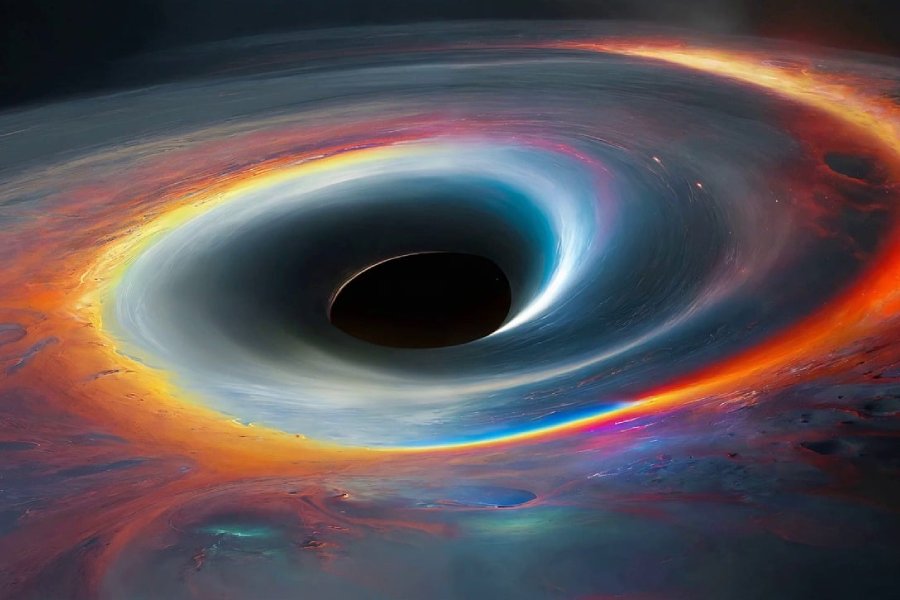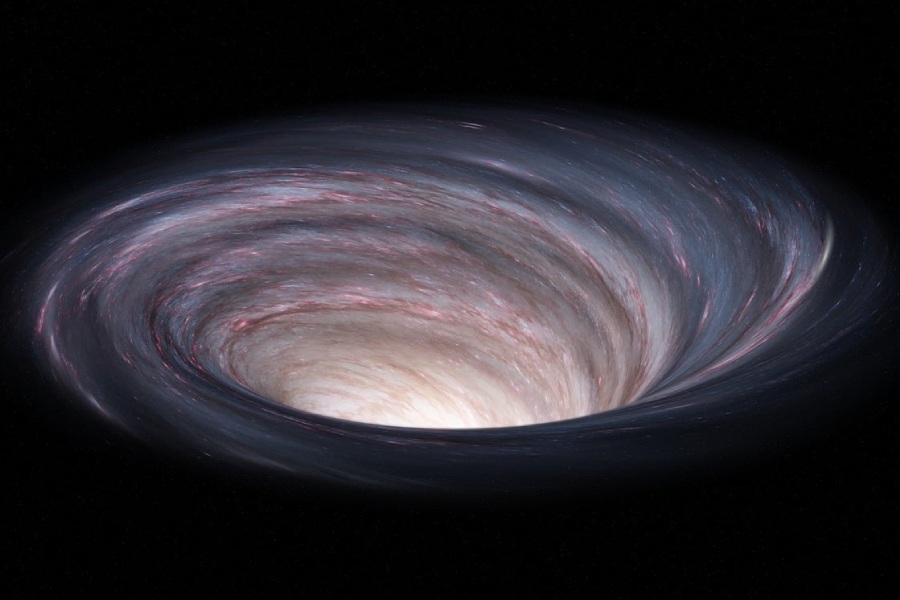Black holes have captivated humanity for decades, their immense gravity and enigmatic nature fueling both scientific curiosity and science fiction’s darkest imaginings. But what exactly are these cosmic giants, and just how big are black holes?
In this article, we’ll take an astrophysical tour to grasp the gulping magnitudes black holes can attain. These gravitational monsters, like the supermassive black hole at the heart of our Milky Way, lurk at the centers of galaxies.
We’ll also investigate stellar-mass black holes, the collapsed cores of massive stars that exploded in fiery supernovas. Even these “smaller” black holes pack a punch, weighing in significantly more than our Sun.
The true mind-bender? The range of possible black hole diameters. Can some black holes grow to rival entire solar systems?
Join us as we probe how inconceivably large these light-swallowing holes can become before counterforces kick in to restrain their cosmic appetites.
How Big Are Black Holes
Most black holes are formed when massive stars collapse, squeezing all their mass into a tiny space
Black holes are incredibly big in terms of their gravitational pull, but they’re actually very small in physical size. With the newest technology available today, scientists can differentiate between small and big black holes, with the smallest black hole being as small as an atom.
The bigger ones, also referred to as “stellar,” can be 20 times bigger and heavier than the Sun’s mass. For reference, the black holes that may exist in the Milky Way galaxy are stellar black holes.
The largest of them all, the supermassive black holes, can be found at the centers of galaxies and can be millions or even billions of times heavier than the Sun. However, despite their massive weight, they’re still really compact. As we said, such black holes can be found at the center of every galaxy – the supermassive one in our Milky Way galaxy is called Sagittarius A, and scientists believe that about 4 million suns or a few million Earths could fit inside.

Solar Masses of Millions or Billions of Times the Sun’s Mass
Black holes range greatly in size. Some may just exceed the Sun’s mass, others reach into the millions or billions of solar masses, while others (extremely small ones) could be as small as an atom. Their diameters depend directly on their masses. Stellar black holes form when massive stars die; their masses relate to those of their parent stars.
Supermassive black holes develop via galactic processes, powering the giant cores found in most galaxies. For example, Cygnus X-1 contains about 15 solar masses compacted into a sphere less than 100 km across. It orbits a supergiant star.
The central black hole in our Milky Way has over four million solar masses. An extreme case, S5 0014+81, holds 40 billion solar masses. The tremendous gravity of these supermassive black holes shapes cosmic structures and triggers quasars. Understanding their sizes provides insight into the evolution of galaxies.
What Are Stellar Black Holes
As mentioned several times throughout the article, stellar black holes form when massive stars deplete their nuclear fuel. Then their cores collapse catastrophically under gravity – this compact remnant is a newborn black hole. From around three sun masses upward, the tiny volume has immense density, with diameters spanning just tens to hundreds of kilometers.
What Affects Variations in Size
The parent star’s original mass plays a crucial role in determining the size of black holes: more massive stars leave behind larger remnants when they die. Measurements reveal a range of possible stellar black hole masses since surface area depends on mass.
Calculations show stellar black holes possessing up to 80 solar masses, with event horizons extending roughly 240 kilometers out for the biggest monsters we’ve detected so far.
Density is astronomical. For example, a 10 solar mass stellar black hole compacts that amount of matter into a sphere less than 150 kilometers across, surpassing anything else measured.
Tracking orbited companions and gravitational waves emitted when merging provides data to gauge the sizes of these invisible space oddities—the stunted corpses of massive stars. Their incredible compactness is astonishing.
Intermediate Black Holes: Size and Existence
Intermediate black holes are between 100 and 100,000 solar masses. This range lies between stellar and supermassive realms. Their origins and natures remain more mysterious. Possible examples appear in some star clusters. Certain ultra-bright X-ray sources also suggest intermediate cases.
Their density profiles and food supply mechanically fit between the other categories. If merging with other holes, intermediate-mass black holes could evolve into enormous cores in galactic centers.
Their dynamics can reveal growth modes. Sizes fitting neatly between well-studied stellar and supermassive classes lend credence. Understanding intermediate scales and prevalence will clarify black hole evolution.
Physical Size Compared to Other Celestial Objects
How big are black holes in diameter? Stellar black hole diameters measure just tens to hundreds of kilometers across versus millions of kilometers for stars. Yet they often surpass their stellar parents by many solar masses due to collapsed density.
If centered where our Sun resides, such a black hole’s event horizon would nearly reach Jupiter’s orbit – stretching hundreds of millions of kilometers wide.
While representing a tiny fraction of the total galaxy mass, a supermassive black hole may determine key galactic properties. Its event horizon alone may exceed the diameter of some dwarf galaxies. If our Sun collapsed into a black hole, its diameter would occupy merely the size of a city.
An incredible contraction for an object harboring an entire star’s worth of matter. Grasping these bizarre contrasts underscores what happens when matter gets squeezed without limit. The resulting black holes distort our imaginations.
Upper Limit on Black Hole Size
Sustained accretion should reach equilibrium with radiation pressure from cosmic background emissions toward gigantic sizes. Cooler ambient backgrounds permit bigger limits. This absolute ceiling relates closely to the age and state of our Universe.
In our observable cosmos, black holes cannot stably surpass about 50 billion solar masses, according to current models. This refines understanding of their ultimate potential for growth. Real examples approaching predicted thresholds for runaway expansion affirm theory remarkably.

Conclusion
Our exploration has unveiled the staggering range of black hole sizes. From stellar remnants exceeding our Sun’s mass to supermassive behemoths millions of times larger, these cosmic titans redefine the concept of “large.” We hope this journey has instilled a sense of awe at the sheer scale of these enigmatic objects.
But the true marvel lies not just in their size but in the ingenuity required to measure them. Since light itself can’t escape a black hole, scientists rely on innovative techniques like gravitational waves and gas motion tracking.
These methods help us grasp the immensity of these invisible giants. The next time you gaze at the night sky, consider the possibility of a colossal black hole lurking in the heart of a distant galaxy.
With every new discovery, science sheds light on the true, awe-inspiring proportions of these light-devouring titans. This ongoing quest to understand how big are black holes reveals a universe filled with mysteries waiting to be unraveled.
